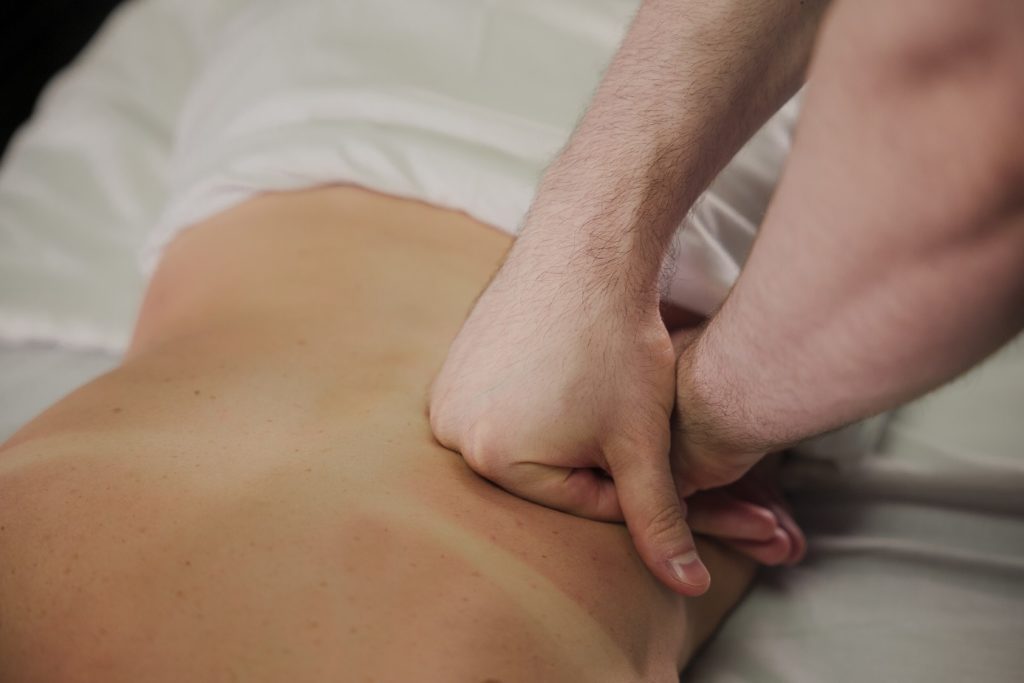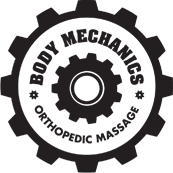- Introduction to back pain
- When you’re ready to a seek medical Massage Therapy Treatment
- Massage Therapy for Back Pain that is hip-dominant or is stemming from labral tear, cam impingement or other hip dysfunction
- Using Massage Therapy Treatment to treat Back Pain that is from Acute injury
- Addressing chronic back pain with Massage Therapy Treatment
- Sacroiliac joint issues and Massage Therapy Treatments
- Summing up
Introduction to back pain
Low back pain is surprisingly common among all Americans and is one of the foremost reasons we miss work. Based on that it is not surprising that we are always looking for ways to solve, treat, or rid ourselves of nagging back pain. The truth is though, our medical system is not the best at treating it.
I am a massage therapist and I love massage therapy but I will be the first to tell you, the number one recommended treatment for back pain is not massage therapy; it is movement. Let’s first clarify what I mean by “recommended.” When I say that what I mean is supported by research and recommended by experts in back pain. Unfortunately that does not mean that recommendation is actually reaching the people in pain. Our medical system is so saturated with other noise that it’s hard for people navigating within the system to find what is best for them.
When you’re ready to a seek medical Massage Therapy Treatment
I gave a short list of questions to go through in a previous post so here’s a condensed version. If you are coming into Body Mechanics for back pain the first thing you need to know is; it is best to come in 3-5 days after an initial injury. You need to be able to lie comfortably on the table during treatment. Please come in unmedicated as well. It is very important that you can accurately feel what is happening to your body while receiving your massage. If you are coming in for more chronic kinds of back pain, the kind that rears its ugly head every once in a while but that you are very familiar with, you can come anytime – but you may want to time your visit based on the cycle of this chronic pain.
Low back pain can be nonspecific but even without a diagnosis, we can divide it up into a few subcategories:
- Back pain that is more related to the hip
- Back pain that is more sacral
- Back pain that is more located around the spine
- Pain that is more muscle spasm related to the area between the hip and the last ribs.
We can get into the individual diagnosis, but it may not matter so much in terms of massage therapy because we are treating symptoms. For example, you may hear that massage therapy is treating any of the following: sacroiliac joint pain, labral tears, bursitis, tendinopathy, disc degeneration, disc herniation, nerve impingement or stenosis.
Saying we are treating a spesific pathogy is slightly off base. We are more managing your body’s response to its pathology.
Massage Therapy for Back Pain that is hip-dominant or is stemming from labral tear, cam impingement or other hip dysfunction
It is important to note that even though the issue may be in the hip, the pain might be felt in other areas, this is called referred pain.
We treat back pain that stems from the hip will in a slightly different way than a back injury. Functionally, this type of pain often appears to create spasm in the glutes, the rotators of the hip and the piriformis. It is essential that a massage address these areas fully. Ideally, and with sufficient time, the hamstrings and the back would also need to be treated.
The area should be thoroughly warmed with massage and/or a heating pad first. Restoring internal and external rotation to the hip through range of motion, active release and mobilizations often significantly helps relieve symptoms. Additionally, as the muscles have a lot of bulk, the glutes need to be treated. I frequently work by creating a lot of slack by putting clients into what I call the “froggy position.” I find it helps to relive the trigger points without causing the patient a lot of undue pain. Depending on the type of injury, relief might be temporary or longer-lasting.

Using Massage Therapy Treatment to treat Back Pain that is from Acute injury
If you are coming in for an acute injury treatment is far different. Ideally you would be coming in after you have a diagnosis, and you are out of the initial stages of healing (again, we recommend 3-5 days after injury.) There must be no open wounds, active infection or swelling. That being said, if you are too uncomfortable for massage in the area that is directly affected, there is a fair bit of research that indicates that working with one area of the body can affect another. Check out this research on stretching the hamstrings affecting neck’s range of motion.
Essentially, a massage therapist who is skilled is going to be able to get you more comfortable while you heal. They’ll do this by working on another body part and by just generally relaxing the nervous system.
Massage for acute areas of pain must be gentle, and focus on relieving discomfort rather than gaining function. Heat or ice may be applied to the back depending on what feels better. Soft strokes such as effleurage, scooping, and techniques that lift the surface of the skin like cupping, might all be utilized. As the massage expands towards the periphery, the strokes can become deeper. If movement is in the therapist’s scope of practice, breathing and tense and relax exercises can all help to signal to the body that it is time for the area that is affected to relax and un-brace.
Addressing chronic back pain with Massage Therapy Treatment
Massage for back pain that is from a chronic injury is where massage therapy really excels. It is generally safe to use a wide variety of depth, massage strokes and movement. The hips, low back, glutes, and mid-back can all be treated safely and effectively. Ideally, due to their size and potential to create tension in the back, the glutes and rotators are treated first with both movement and massage. Then the therapist would move on to treat the erector muscles along the spine and quadratus lumborum (the deepest abdominal muscle) with stripping and trigger point therapy.
Since therapists have the option to choose from many massage therapy modalities, the best techniques to use are the ones that 1) The patient enjoys, and 2) Are most effective for the situation. Some people naturally respond better to movement, tense and relax, stroking, trigger point or fascia work. Here good listening skills both with the hands and the ears are very useful in deciding how to proceed.
Sacroiliac joint issues and Massage Therapy Treatments
Massage therapy for SI joint issues has a very different plan than other massage therapy plans. The SI joints are small joints to the left and right sides of the sacrum. They have very little movement, and in fact over time, the movement reduces, but they cause a great deal of pain for many people. Since the pain is radiating from a bony area that often feels inflamed and pinched, many people feel relief through ice application to the joint.
Additionally, since it is a joint, we can relieve the tension on it by making sure the muscles around it are relaxed. Treating the quadratus lumborum and the glutes (specifically the cute medius) seem to provide the most relief. Massage and stretching can be applied to these areas to provide the sensation of even pressure across the joint, which helps to relieve the pain.
Summing up

There are many different kinds of low back pain and they can present in different ways. While movement is the best way to address it, I think I’ve pointed out some specific and effective ways Massage Therapy can be used to help people in pain. Provided the therapist pays close attention to what kind of massage techniques are safe. Based on where the issues are stemming from and listening closely to the patient’s body and preferences, massage therapy can be a helpful treatment. If you would like to talk to us about what treatment options are right for you, you can reach out to us, send an email at info@BodymechanicsNYC.com!
ankle massage athletes back pain Body Mechanics Body Mechanics Orthopedic Massage consent covid-19 fascia work health care healthcare home care intra-oral massage manual therapy massage massage insurance massage NYC massage nyc. running injuries Massage therapist Massage therapy medical massage Myofascia new york nyc orthopedic massage orthopedics pain pain low back pain pain science posture pregnancy pregnancy loss prenatal care prenatal massage Preventative Care running science based small buisness Sports massage stress stretches tendinitis therapist profile tmd tmj training
- December 2025
- September 2025
- August 2025
- July 2025
- May 2025
- April 2025
- March 2025
- February 2025
- January 2025
- December 2024
- November 2024
- October 2024
- September 2024
- August 2024
- July 2024
- June 2024
- April 2024
- March 2024
- February 2024
- January 2024
- November 2023
- October 2023
- September 2023
- July 2023
- April 2023
- March 2023
- January 2023
- October 2022
- June 2022
- May 2022
- March 2022
- February 2022
- January 2022
- December 2021
- November 2021
- October 2021
- September 2021
- August 2021
- July 2021
- June 2021
- May 2021
- April 2021
- March 2021
- February 2021
- January 2021
- December 2020
- November 2020
- October 2020
- September 2020
- August 2020
- June 2020
- March 2020
- February 2020
- January 2020
- November 2019
- October 2019
- September 2019
- August 2019
- June 2019
- May 2019
- April 2019
- March 2019
- October 2018
- September 2018
- June 2016
- April 2016
- February 2016
- January 2016
- September 2015
- August 2015
- July 2015
- May 2015
- April 2015
- March 2015
- January 2015
- August 2014
- July 2014
- June 2014
- April 2014
- March 2014
- February 2014
- January 2014
- December 2013
- November 2013
- September 2013
- August 2013
- anxiety (1)
- Back Pain (11)
- Body Mechanics (25)
- Body Mechanics Blog (21)
- Bursitis (1)
- business (6)
- Carpal Tunnel (1)
- ceu's (1)
- Continuing Education Credit (2)
- COVID (1)
- Cupping (1)
- deep tissue (4)
- dyi (1)
- Foot Pain (1)
- General (46)
- healthcare (47)
- insurance (2)
- lymphatic massage (2)
- Massage Education (2)
- massage NYC (39)
- massage therapy (48)
- NYC Marathon (4)
- Orthopedic Massage (36)
- pain management (12)
- pain managment (3)
- pain science (7)
- Plantar Fasciitis (1)
- Plantars Fascitis (1)
- Prenatal Massage (11)
- preventative care (14)
- relaxation (4)
- rub (1)
- Runners Massage (4)
- running (4)
- sleep (2)
- Sports Massage (23)
- stress (2)
- Stretches (11)
- subacute (1)
- swedish massage (2)
- tendons (1)
- Therapist Profile (6)
- TMJ Massage (4)
- Training (1)
- treatment techniques (1)
- Uncategorized (37)
- World Health Day (1)
